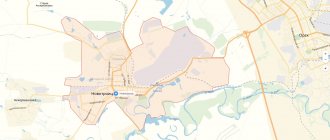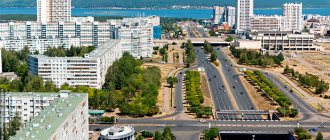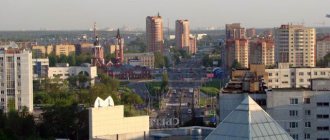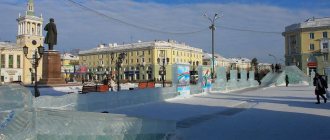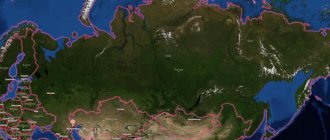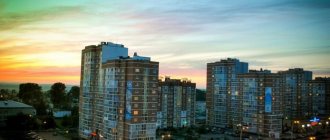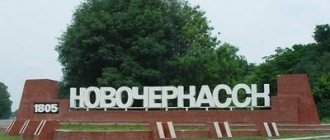Noyabrsk is one of the most interesting tourist cities in the Yamalo-Nenets Autonomous Okrug (Yamalo-Nenets Autonomous Okrug). It received its name in honor of the event that marked the beginning of its history. In November 1976, the first landing of railway construction workers arrived here. Now Noyabrsk is known as a city with great industrial and tourism potential. The variety of monuments, cultural centers, attractions and magnificent northern landscapes will not leave any traveler indifferent.
Rich in natural resources
Siberian Uvaly is the center of Western Siberia, where the city of Noyabrsk is located. What region of the country can still boast of a place where there is a powerful simultaneous development of two industries: oil and gas production? Their enterprises make a great contribution to the creation of a convenient and beautiful infrastructure of the city, recognized as one of the most comfortable cities in Russia, as well as to its cultural life. It is noteworthy that in terms of the number of residents and the concentration of industrial facilities, it exceeds the district center - the city of Salekhard.
The place where the city of Noyabrsk is located is completely surrounded by taiga. Islands of nature have been preserved here, decorating it and distinguishing it from other oil cities. Large and small lakes, rivers, swamps are part of the landscape of the surrounding city, located on a small hill.
Enterprises and work in Noyabrsk - black gold at the forefront
From the moment of the founding of Noyabrsk, the leading sector of its economy was predetermined. The southern outpost of Yamal has always been and to this day remains the central territory for the production of hydrocarbon resources in the district, and therefore, the industrial potential of Noyabrsk consists of organizations and enterprises engaged in the extraction, processing and transportation of oil and gas, and most of them are located outside the city - in its industrial zones. At the same time, the two main city-forming enterprises of the municipality are the subsidiary of Gazprom Neft - Gazpromneft-Noyabrskneftegaz and the branch of Gazprom - Gazprom Dobycha Noyabrsk.
Komsomolskoye field Gazprom Dobycha Noyabrsk
The city also operates the Noyabrskaya Combined Cycle Power Station, the Noyabrsk Gas Processing Complex, Noyabrskteploneft, the Drilling Service Company, etc. At the same time, Noyabrsk is one of the few unique Western Siberian cities in which two parallel industries are simultaneously developing - gas and oil (with a significant advantage of the latter). It is no wonder that the bulk of the city’s population works in these industries. Thus, about 30 thousand November residents, or every third resident of the city, are employed in the oil production industry, and gas production is provided by about 3 thousand people.
In addition to the industrial enterprises of the city, more than 1,000 organizations of various sizes and forms of ownership, belonging to many industries, operate in Noyabrsk. So in the municipality, as noted above, the construction industry, communications, trade and other sectors of the economy are highly developed. In recent years, the food industry has also developed widely in Noyabrsk, represented by a local dairy plant, a bakery and other enterprises producing fish, smoked-dried, meat and sausage products. The share of labor resources employed in government positions is very noticeable: in the administrative sector of Noyabrsk, in the pension, social insurance and tax services, in the medical field and education of the municipality, etc.
Along with the growth and development of the city, its retail network also grew and developed, today represented in Noyabrsk by dozens of shops and enterprises providing services to the population, and a number of shopping centers and markets. Thus, the markets of the city of oil and gas workers include the markets "North-1" and "North-2", "Afgan", "Furniture Row", "Cossack", "New" and "Southern Market" and the local car market. And the largest shopping centers include the shopping centers “Noyabrsky”, “Ukraine”, “Slavyansky” and “Le Grand” and the shopping centers “Vremena Goda” and “Vostochny”. Also in the city there are shopping complexes “Accent”, “Santa”, “Kovcheg” and others.
Today, almost all large domestic household appliance chains are open in Noyabrsk: Eldorado, M-Video, Tekhnosila and Expert. The city also has several large furniture and construction stores, more than a dozen beauty salons and hairdressers, and the main financial giants of the municipality are Sberbank, Gazprombank, Zapsibkombank, Sibneftebank, Noyabrskneftekombank and other credit organizations.
Half of the year is winter
The harsh climate in the places where the city of Noyabrsk is located is a long cold winter, fleeting spring and autumn, short summer with warm and even hot (up to 30 degrees) days. At the end of October, the city is already hidden under snow cover, and rivers and lakes are covered with ice. The month of bitter frosts is January, winds and snowstorms come in February, rains in August. Living in such conditions is not easy. After all, there are on average only 200 sunny days a year, and the temperature can change by 15 degrees during the day.
Formation of an oil and gas city
The station village and local village council appeared in official documentation on October 26, 1977, when they were registered by the Tyumen Regional Executive Committee. Shortly before this, the formation of local infrastructure began. By August 1977, the population of Noyabrsk was already 1,523 people. The majority were workers engaged in the construction of industrial facilities and the development of oil and gas fields.
At the end of August 1978, the Tyumen authorities moved the workers’ settlement to the two hundred and thirteenth kilometer of the Surgut-Urengoy railway. The decision was prompted by the need to protect the population of Noyabrsk from possible flooding. To the north of the village there was just a suitable hill. Here there is another analogy with Rome, which was built on seven hills.
The railway station, in the construction of which a lot of financial resources and labor had already been invested, was left in place. Today, the area of the railway station (today's Noyabrsk-1 station) remains one of the city's microdistricts and is called the Zhelznodorozhnikov village.
The improvement of the settlement continued. In 1978, the city had only eight streets, a post office, a medical center and two shops. Three years later, the population of Noyabrsk already lived in five capital five-story buildings of standard construction, and the total living space was more than 40 thousand square meters. m. A time capsule with a message to Komsomol members of the 21st century was laid in the foundation of the first “Khrushchev” building.
At the end of 1981, the population (Noyabrsk was still a village at that time) reached 23 thousand people. A year later, there were 25.5 thousand residents. Over five years (from 1981 to 1986), the population of Noyabrsk almost tripled and reached 68 thousand. At the time of the fifth anniversary of the settlement being awarded city status, in 1987, the number of local residents was 77 thousand people.
The settlement continued to develop over the years. True, the collapse of the Soviet Union slowed down the growth rate of Noyabrsk, and the population reached 100 thousand people only by 2005.
How to get to Noyabrsk? Choosing a route
In the place where the city of Noyabrsk is located, there is an intersection of major highways, which allows its residents to easily reach the nearest regions and the “mainland” by rail, highway or air transport. The distance to Moscow is 3200 kilometers.
- The journey by car from the capital city can be covered in approximately two days. You can spend more time if you get acquainted with the sights of cities located along the route: Vladimir, Nizhny Novgorod, Kazan, Perm, Khanty-Mansiysk.
- Trains run from the Kursk and Yaroslavsky stations of the capital, which can take you to the city without transfers in 53 hours.
- There are direct flights from Vnukovo Airport to Noyabrsk; the flight time takes three hours.
- A bus service connects this oil city with such Siberian cities as Surgut, Tyumen and many others.
Infrastructure of Noyabrsk: condition of transport arteries, housing and communal services and social sphere
The level of well-being of the city of gas and oil workers was also reflected in its developed infrastructure, starting with transport arteries and housing and communal services and ending with the social sphere.
Thus, Noyabrsk has a highly developed transport system, which allows it to fully supply the city with material resources and ensure uninterrupted delivery of products to the local population. The favorable geographical position of the southern outpost of Yamal made it attractive for domestic air carriers. And today the city has a modern airport, capable of receiving not only passenger ships, but also providing reception and departure of heavy-duty aircraft.
Noyabrsk Airport
In addition, a railway with two stations in the city, as well as a modern highway, passes through the municipality. Noyabrsk itself is also fully equipped with modern roads, the condition of which is regularly monitored and updated as necessary. And well-thought-out transport interchanges in the city save its residents from the most common problem of modern industrial cities - regular traffic jams, as a result of which congestion on the roads of Noyabrsk is observed extremely rarely - during major accidents, during periods of extremely low visibility and heavy ice, etc.
The infrastructure of Noyabrsk's life support systems is also excellently developed in the city, and local authorities pay especially great attention to the improvement of the territory of the municipality and the formation of its modern architectural appearance. So, in recent years, Soviet-style panel and wooden buildings of the same type have been replaced by more and more modern, beautiful and even exclusive permanent buildings, among which special attention should be paid to the local teleport, intellectual center and fire station. All of the listed objects are unique in their construction designs, which have no analogues in the entire Western Siberia. And the local music school in city No. 2 is generally recognized as one of the best and most comfortable schools in our country.
By the way, housing offices monitor the condition of residential buildings in the city in all its microdistricts, both their external appearance and their internal condition, with special care, responding as promptly as possible to applications received from citizens. The only exception is the depressing picture of the state of housing in the village of Zheleznodorozhnikov, the situation in which is currently under special control by the authorities. But in terms of the rapid pace of construction, the city of Noyabrsk is in honorable second place in the entire Yamal-Nenets Autonomous Okrug, second only to the Purovsky district, and since the beginning of 2012, more than 7.11 thousand square meters have been built and put into operation in the municipality. meters of housing. In the near future, the municipality plans to completely rebuild and improve another of its microdistricts - the 8th, the territory of which is currently almost completely empty.
8 microdistrict development Noyabrsk
Noyabrsk is fully equipped with social institutions. In total, the city has about 50 kindergartens and 20 schools, including a vocational lyceum and music schools. The municipality has 13 clinics and 7 hospitals, an ambulance station and more than 11 pharmacies, as well as a local petroleum technical school and a pedagogical college, a department of a medical school and several branches of various universities.
The city's cultural infrastructure is also developed: residents have 13 clubs, 9 libraries, a number of cultural and sports palaces and centers and a local cinema with 730 seats. The life of modern Noyabrsk is covered by several local TV channels and radio stations, as well as a number of November printed publications, led by the socio-political newspaper “Severnaya Vakhta”, published in the city almost from the moment of its formation - since 1983.
Northern fishing
Lakes and rivers in the area where the city of Noyabrsk is located are rich in fish. Lovers of “silent hunting” flock here at different times of the year. In addition, they do not need to carry bulky equipment with them: everything necessary for summer and winter fishing is provided here at special points. Fishing surrounded by picturesque nature is a great pleasure, especially if the catch is pike perch, crucian carp, catfish, pike, bream and other fish.
After fishing, you can relax by taking a steam bath, play billiards, and cheer up on exercise equipment and games. In winter, you can ride through the snowy forest not only on skis, but also on a snowmobile or ATV. Children's holidays have also been thought out, so family trips are becoming more and more popular.
Diversity of national composition
The national composition of the November people is particularly diverse. As of 2010, representatives of the following nationalities lived in the city:
- Russians (65.5%);
- Ukrainians (12.3%);
- Tatars (6.7%);
- Azerbaijanis (2.9%);
- Bashkirs (2.3%);
- Belarusians (1.5%);
- Moldovans (1.1%);
- Lezgins (0.5%).
The population of Noyabrsk is also formed by the Chuvash, Uzbeks, Tajiks, Chechens, Kyrgyz, and Kumyks.
The city is dominated by two main religions - Christianity and Islam. Representatives of predominantly Slavic peoples are Orthodox; Tatars, Bashkirs, Uzbeks and other people from the southern republics profess Islam. Despite the diversity of the population, most November residents are friendly and cultured people who are concerned about the well-being of their city.
Noyabrsk for children
Noyabrsk is still young: it was founded in 1975 and received city status in 1982. But it is developing at an unprecedented pace. And here there is something to see for guests and something to be proud of for residents. Despite the harsh conditions of the North, residents rarely leave the city. After all, it not only creates excellent conditions for real life, but also a lot has been done and is being done for the younger generation: various clubs, sports sections, centers for additional education.
Noyabrsk is a city where there is a beautiful Children’s Park with a Ferris wheel on a hill. The grounds and paths in it have a bright elastic coating; a November entrepreneur is engaged in its production from used car tires.
Development of oil and gas fields
The eventful and colorful history of the settlement began with just 40 people who landed on the ice of the Itu-Yakha River in April 1975. The goal of the drillers was to develop a local oil field. Just three months after the arrival of the helicopter landing force, the first fountain of black gold was obtained. Thus, the city was given life by the Kholmogorskoye, Karamovskoye, Povkhovskoye, Tevminskoye, Vyngapurovskoye and Sutrominskoye oil and gas fields in the north of the Khanty-Mansiysk Autonomous Okrug and the south of the Yamalo-Nenets Autonomous Okrug.
In November 1976, the next labor landing arrived at the site of the future workers' settlement. At the same time, construction began on a new railway station on the Surgut – Urgenoi line and a station village. The city began to be designated on maps under the name Noyabrsk - after the name of the month when construction of the oil workers’ village began. By the way, at some point they wanted to name the village Khanto - after one of the local lakes, but socialist thinking prevailed.
The original mosquito monument
Noyabrsk is the city where the monument to Komar is located, made by the Noyabryan sculptor Valery Chaly from used machine parts and other equipment. When asked why a monument to a mosquito was erected, residents answer differently. According to one version, many pioneers left these places due to the summer abundance of these cow-sucking creatures. Others associate the mosquito with oil workers: after all, it also drills and pumps, albeit with completely different fuel.
Beautiful urban sculpture
Unusual compositions depicting everyday scenes, the beauty of nature, or having a hidden metaphorical meaning also deserve the attention of tourists. These small “surprises” give the city its individuality and add “zest”.
Sculpture "Crocodile"
- Address: Pionerskaya street.
This sculpture immediately catches your eye. A full-scale crocodile with an open toothy mouth and a curved tail is crawling along the side of the building. Discarded spare parts were used as material for the sculpture. The original project came out of the hands of the enthusiastic artist Valery Chaly.
Monument to Komar (Master of Siberia)
- Coordinates: 63.190737, 75.551731.
The only monument in Russia to the blood-sucking monster, which is the nightmare of all residents of the swampy lowlands, was also created by Valery Chaly. Like the Crocodile, the Mosquito is made from old parts. The cyber insect looks terrifying and will definitely be remembered by tourists.
"Trace of Bigfoot"
- Address: Park of Culture and Leisure.
Some argue that long before the mammoths, the Yettis ruled Yamal. In 2009, on the territory of Noyabrsk, the imprint of a huge foot was discovered, which could only belong to Bigfoot. In the Noyabrsk park there is a stone wall with a copy of the imprint and a historical note about how the Novemberans proved the existence of Yetti.
Composition “Eternal Love”
- Address: ave. Mira, 54.
An unusual sculpture is located at the entrance to the registry office building. The composition is quite abstract, so people’s imaginations depict moths, cobras, octopuses in it... In fact, the artist depicted a flower in a vase, to which, like butterflies, a winged young man and girl in love flew in.
The sculpture is decorated with colored glass that shimmers beautifully in the rays of the sun. In the evening, the monument to Eternal Love is illuminated by built-in light bulbs, which also gives it a fabulous look.
Monument to the Reading Couple
- Address: ave. Mira, 70.
A couple in love sits on a bench in the middle of a blooming square. A girl in a summer dress holds an open book in front of her, and the young man interrupted his reading. Lost in thought, he looks into the distance. Apparently, the lines of the book led him to philosophical reflection.
The bronze sculpture decorated Noyabrsk in 2006. This is the original project of the city Intelligence Center, which won the “City Brand” competition.
Sculpture "Polar Bears"
- Address: Magistralnaya street.
The polar bear is a symbol of the Arctic region, as well as courage, endurance and perseverance, without which it is impossible to survive on this harsh land. It is not for nothing that two polar bears adorn the coat of arms of the Yamal-Nenets Autonomous Okrug.
Stone sculptures of polar bears appeared in Noyabrsk in 2012. A large male, female and cub are made in a realistic manner. This is a very sincere, beautiful composition that is definitely worth visiting with your child.
Sculpture “Fisherman on winter fishing”
- Address: Pioneer Street.
The sculpture depicts an everyday scene: a middle-aged fisherman in warm winter clothes pulls a fishing line from an ice hole. Next to him is a travel suitcase, a drill and a bottle of alcohol.
This sculpture looks especially organic in winter, when the fisherman’s hat with earflaps and felt boots are dusted with snow. The composition was created by the same Valery Chaly, but this time he worked with bronze, and not with spare parts.
Flora
The vegetation cover in the Yamal-Nenets Autonomous Okrug has a pronounced latitudinal zonation. Five landscape zones can be distinguished: northern taiga, forest-tundra, shrub, moss-lichen and arctic tundra. In the northernmost, arctic zone, vegetation is very sparse. Here you can only find mosses, lichens and sedges. Small bushes and herbs are already growing in the moss-lichen tundra. In the next zone (shrub tundra) dwarf birches and willows grow, and berries and mushrooms grow along the rivers. There are many swamps and small rivers in the forest-tundra. Dwarf birches, larches, and small spruce trees grow here. In the southernmost zone of the Yamalo-Nenets Autonomous Okrug - the taiga, there are many lakes, swamps, and rivers. The entire territory is covered with dense light and dark coniferous forests.
Demography
Population changes
| Year | 1982 | 1986 | 1989 | 1996 | 2002 | 2004 | 2006 | 2010 |
| Population | 25,100 | 68,000 | 85,880[7] | 95,500 | 96,440[8] | 98,400 | 108,500 | 110,620[3] |
- Population growth chart:
The average age of the population is just over 30 years.[9]
Geography
Russia is beautiful and rich: the Yamalo-Nenets Autonomous Okrug is the black pearl of the northern part of our country. And it occupies no less than 770 thousand square kilometers of the West Siberian Plain. The district includes: the Gydansky Peninsula, the Tazovsky Peninsula and, of course, the Yamal Peninsula. Most of the district is located beyond the Arctic Circle. From the north, the Yamal-Nenets Autonomous Okrug is washed by the Kara Sea, from the south it is adjacent to the Khanty-Mansi Autonomous Okrug, its eastern neighbors are the Taimyr and Evenki Autonomous Okrug, and from the west it borders on the Arkhangelsk Region and the Komi Republic. The relief of the Yamal-Nenets Autonomous Okrug can be divided into flat and mountainous. All three peninsulas are dotted with small rivers, hollows, ravines and swamps. The mountain range stretches for two hundred kilometers in a narrow strip along the Polar Urals. The climate of the Yamal-Nenets Autonomous Okrug is sharply continental, harsh, and is divided into three zones: the northern zone of the West Siberian Lowland, subarctic and arctic. The population is approximately 500 thousand people with a density of less than one person per square kilometer.
Crime
Noyabrsk was a very young and partially closed city during Soviet times with a predominantly professional working population, which provided some protection from external criminal influence. Since its discovery in the early 1990s, as the oil and gas industry maintained a relatively high standard of living amid economic turmoil in post-Soviet Russia, the illegal drug business has become very lucrative, attracting criminal elements from other regions. The situation was made worse by the fact that the police and officials were corrupt and ill-prepared to deal with the problem, as well as a general lack of activities for teenagers. The drug abuse situation in Noyabrsk was covered on national television and other media, and finally official and civil organizations emerged to combat the problem.[15]
On March 17, 2009, the criminal case against Mayor Nikolai Korobkov was transferred to court. According to the prosecution, he transferred part of the municipal property to a private company when he did not have the authority to do so.[16]
Gubkinsky
The city of Gubkinsky (Yamalo-Nenets Autonomous Okrug) became a city of district significance in 1996 and was named after the Soviet geologist Ivan Mikhailovich Gubkin. It is located on the left bank of the Pyakupur River, two hundred kilometers from the Arctic Circle. This city was formed as a base center for the development of oil deposits. Therefore, Gubkinsky (Yamalo-Nenets Autonomous Okrug) mainly specializes in the oil and gas production and processing industries. The city does a good job of working with young people: there are sports and cultural centers, a dance school, and a recording studio. Young people have the opportunity to get an education in their hometown.
Other demographics
The small number of elderly residents also determines the fact that in Noyabrsk the number of joyful occasions associated with the birth of a child exceeds the number of mourning events. Thus, in 2015, there were 1,662 births for every 513 deaths, and the natural increase was 1,149 people. The overall rate of natural population growth was 10.7, while Russia as a whole is characterized by an indicator of zero. Until recently, the Russian Federation was completely characterized by population decline.
Indigenous peoples of the Yamalo-Nenets Okrug
Today twenty peoples live in the Yamal-Nenets Autonomous Okrug. But the true indigenous inhabitants are the Khanty, Nenets, Selkup and Komi-Izhemtsy, who have lived in this territory since time immemorial. The rest settled only in the second half of the twentieth century. This is due to the development of the territories of the Far North during the era of the Soviet Union.
Khanty: this people have lived since ancient times in the territories of the Khanty-Mansiysk and Yamalo-Nenets Autonomous Okrug. The culture, language and customs of this people are very heterogeneous. This is due to the fact that the Khanty settled over a fairly vast territory and therefore became somewhat scattered.
The Nenets inhabit a vast territory of Russia - from the Taimyr Peninsula to the coast of the Arctic Ocean. These people migrated from southern Siberia in the first millennium AD. He belongs to the Samoyed group.
It is known that the Komi people have lived in this territory since the 1st millennium BC. This people is divided into northern and southern Komi. From time immemorial, the first people were engaged in reindeer herding, fishing and hunting. The second were hunters and fishermen.
The Selkups are the most numerous people of the North. The Selkups traditionally engaged in fishing and hunting. Those representatives of the people who lived at higher latitudes also bred deer.
